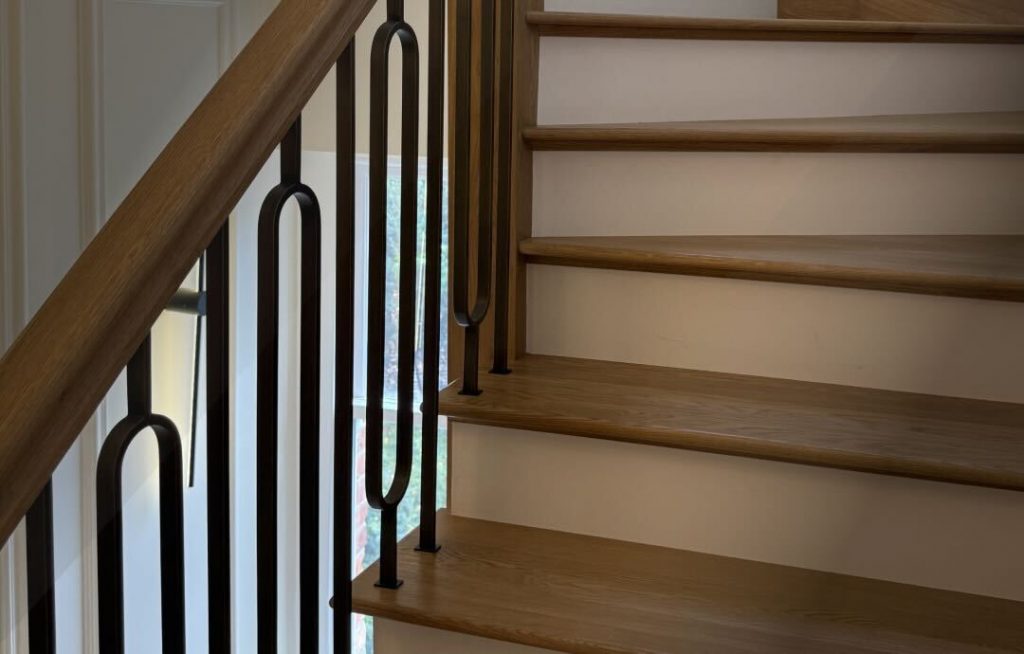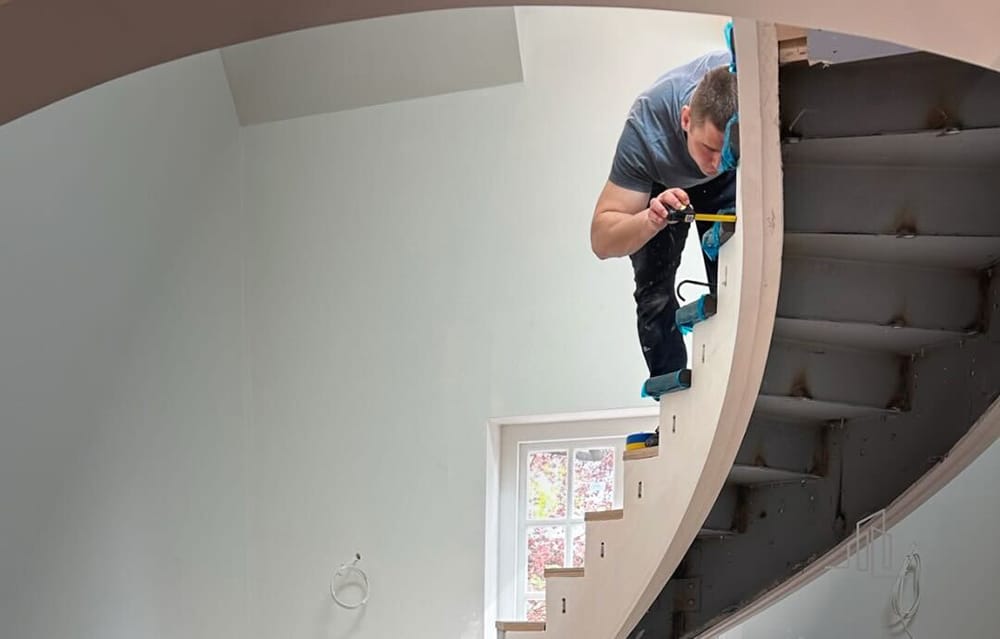Vibrations and Squeaks in Stairs – How to Eliminate Them?
Like many other experts, we often repeat that it is not worth skimping on the construction of a staircase. At first, DIY assembly or choosing affordable materials may seem like a profitable solution. However, the problems you will encounter in the coming years will require additional investment. One of the common problems encountered by staircase owners (especially wooden ones) is squeaking and vibration.
This is actually more than just an annoying noise. First and foremost, it is a safety risk, as it can lead to deformation and damage to the entire structure. Other staircase materials can also produce squeaking noises. Therefore, you need to know how to deal with this problem without spending a lot of money!
Common Causes of Vibrations and Creaking in Stairs
It is no secret that among the common problems in the operation of wooden staircases are the risk of squeaks, vibrations and other unpleasant sounds. However, do not think that these problems are unique to wooden staircases. Even metal designs can squeak and vibrate if they are not constructed correctly. So, we would like to first highlight the main causes of such problems:
- Excessive loads. Rapid deformation of parts occurs, sometimes leading to breakage. Minor backlashes appear, contributing to faster wear.
- High humidity. Changes in the wood occur at an accelerated rate. Swelling or, conversely, shrinkage and shrinkage occur, causing cracking and breakage.
- Unsticking and loosening of fasteners. This happens if poor-quality adhesive or self-tapping screws instead of bolts are used to install the staircase.
- Wood shrinkage. This occurs when the staircase is assembled while the wood is still damp. Over time, excess moisture evaporates, the staircase elements shrink, gaps appear, and squeaking occurs.
Why is it important to know what factors cause vibrations and squeaks? Knowing why the problem arose will make it easier for you to solve it. In addition to common causes, there may be less obvious (and quite rare) factors, such as paint getting on joints, grooves, and fasteners. Varnish and paint cover surfaces with a smooth, dense layer. If they get into the grooves or fasteners, they will play, bond poorly with the wood and sag.
Advice on Getting Rid of Them
If your staircase creaks or vibrates, you understand better than anyone how quickly you want to get rid of it. Over time, this becomes an irritant that negatively affects your psychological health. That is why it is important to take action as soon as you notice the first signs or creaks.
Moreover, ignoring the problem will only make the issue worse. For example, if the squeaking is caused by gaps in the wood between the steps, this problem may become more serious over time. As a result, the safety of your family members is at risk. In this article, we have compiled some key tips to help you get rid of unpleasant vibrations and squeaks in your staircase!
1. Identify the Source of Unpleasant Noises

Start by locating the source of the noise. Walk the stairs slowly while applying weight at the front, middle and back of each tread. Note when the squeak changes as you step near the stringer or nosing. Mark every suspect point with low-tack tape. If possible, have someone listen below while you step above to triangulate the worst locations.
Look for tell-tale movement between tread and riser, loose wedges in housed stringers, lifted nails, and gaps where timber has shrunk. Grip the balustrade and wiggle the handrail. Rattles often transmit as squeaks. Use a torch and mirror to inspect the underside. A phone’s voice memo or a mechanic’s stethoscope helps isolate exact joints. Prioritise the loudest points first.
2. Fill Cracks and Eliminate Gaps

Once you’ve identified noisy joints, stabilise them by removing play. Slip thin hardwood shims into gaps between tread and riser or along the stringer, test fit dry, then glue with PVA and tap home gently. Where wedges in housed stringers have loosened, re-glue or replace them. Add glue blocks in corners under treads and risers to stiffen joints. For inaccessible spots, drive anti-squeak screws from above: drill pilot holes, countersink, then tighten until the squeak stops. Remove loose nails, re-seat, or replace with screws.
Surely, one way to avoid squeaks is to choose the right materials. Wooden structures are more prone to such problems. Therefore, you can choose other reliable materials, such as natural stone.
Learn how to choose the right type of stone for your staircase at this link → https://vpstairs.com/choosing-the-right-stone-for-your-bespoke-staircase-complete-comparison-of-all-available-options/
3. Treat the Staircase with Protective Agents

Reduce minor squeaks at inaccessible interfaces with a dry lubricant. Puff graphite or talcum into hairline joints between tread and riser or along the nosing; work it in by stepping repeatedly. Avoid oil-based lubricants: they attract grit, stain timber and can create slip hazards.
After structural fixes, seal the timber to stabilise moisture movement. Apply two or three coats of floor grade polyurethane varnish or hardwax oil, lightly denibbing between coats. Finish faces you can reach, including the underside of accessible treads. Seal ends. To cut vibration and resonance, fit a carpet runner with dense underlay and secure it with rods or gripper.
Work with Experienced Experts to Avoid Squeaks
Owners of old wooden staircases know better than anyone that squeaks can be extremely annoying. What’s more, fixing the problem can require a significant investment. That’s why the best solution is to build a high-quality staircase that eliminates any unwanted noises. To do this, you should only work with proven and experienced staircase builders in the UK, such as V.PSTAIRS.
This is one of the main reasons why you should turn to experts to build your staircase, rather than doing it yourself. Working with professionals guarantees that the structure will be designed clearly and correctly. The right approach and the use of quality materials will give you the best results. It is an investment in the future, as you will not have to spend money on solving problems such as eliminating squeaks and vibrations in the future. Contact us in any convenient way for a free consultation!

